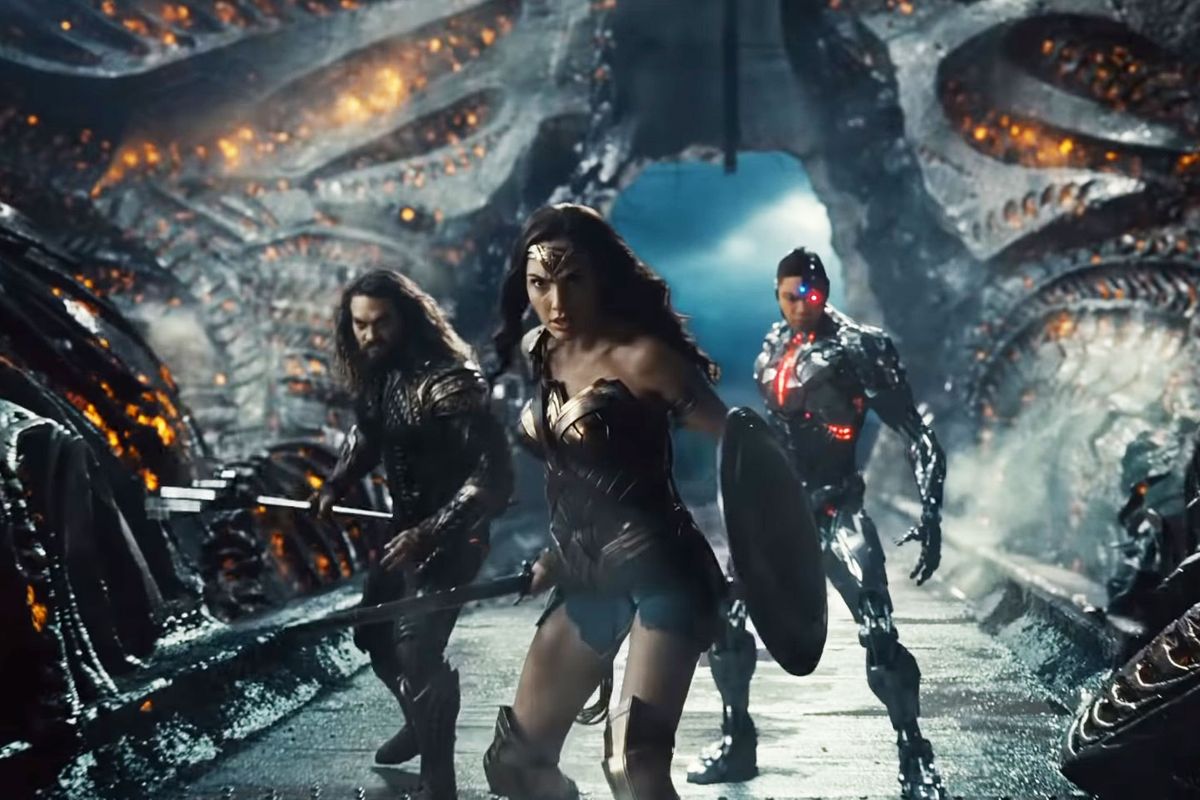
Film Review: Zack Snyder’s Justice League
Film Reviews
Zack Snyder’s Justice League
Director: Zack Snyder
Atlas Entertainment and The Stone Quarry
Streaming on HBO MAX: 03.18
There’s a lot of baggage to unpack in reviewing Zack Snyder’s Justice League, including tragedy, breakdowns and a whole lot of toxic internet fandom. It was all enough to make me weary of geekdom even before the highly disturbing revelations about Joss Whedon took the sky from me. While neither Whedon’s sins or Snyder’s ordeal are the subject here, they certainly cast their shadows over the film, but that’s all the time they get in this review.
Zack Snyder’s Justice League begins with Superman (Henry Cavill) dead and a new villain called Steppenwolf arriving on Earth. Batman (Ben Affleck) and Wonder Woman (Gal Gadot) must both work together and unite an unlikely group of heroes—Cyborg (Ray Fisher), Aquaman (Jason Momoa) and The Flash (Ezra Miller)—to fight Steppenwolf, who wants to conquer not only the Earth’s population but the planet’s entire existence.
I’ve actually had a bit of a love-hate relationship with both Justice League directors for a long time, between their fragile egos, self-aggrandizing public statements and the histrionics of their throngs of smugly devout followers who bully anyone who dares question the supremacy of their masters and just making it harder to enjoy the work. The most interesting thing about Zack Snyder’s Justice League is that, in many ways, it’s equally vindicating—and almost equally damning—to both. Whedon’s cut was sorely lacking in a sense of urgency and epic scale, and the villain was terrible. Snyder provides the epicness, and the storyline makes a lot more sense.
On the other hand, the excessive slow-motion shots account for about 18 minutes of added runtime just by themselves, and while this movie needed to be over two hours, it sure as hell didn’t need to be four. Some of the dialogue scenes drag and lack the tight rhythm that Whedon tends to provide, and while Whedon’s comic relief didn’t always land—the Lois and Martha scene was painful—I found myself missing some of the bits that did work. For better or worse, Whedon was hired because the studio was fearful after the failure of the humourless, ridiculously dark yet laughably cheesy slog that was Batman v. Superman, and leaving a lot of footage on the cutting room floor was his job. But let’s not talk about the intrusive Sarkovian, I mean Russian, family.
Snyder’s version is Avengers by way of Lord of the Rings, specifically the extended editions, both stylistically and in terms of story. The mother boxes and their importance are a lot more clear and, surprisingly, more interesting. But they also feel—more than ever—like a hybrid of the infinity stones and the nine rings.
Still, who the villains are and what they are doing is a lot more clear, and that’s not easily dismissed. In addition, the character of Victor Stone/Cyborg got pushed to the side, to put it mildly, in the theatrical version. It turns out that, in many ways, he’s meant to be the protagonist, in the sense that he’s the character who drives the story and has a major arc and a backstory that is tied directly to the plot. Fisher and Joe Morton (Terminator 2: Judgement Day, Speed)—who plays Silas Stone, Victor’s father—really lost the bulk of their work in the cuts, and while their story is a bit cornball at times, it adds emotional heft and more. While cutting it down may have felt necessary in order to hit that two-hour mark, doing it to such an extent was a problematic choice, to say the least.
Aside from those points, Zack Snyder’s Justice League is really the same movie; there’s just a lot more of it. I was pleased by how much of the Batman stuff that I loved was still here in this version, and on the whole, Superman and even Wonder Woman get more to do. The violence does get quite strong in the final battle in a Lord of the Rings, orc-killing kind of way that’s pretty entertaining but arguably quite out of character for some of these heroes. The tacked-on R-rated language just feels silly, as does the wholly unnecessary sequence with Jared Leto (is there any other kind?)
I have mixed feelings about the switch back to Tom Holkenbourg in place of Danny Elfman as the composer. I quite like both as artists, but I loved what Elfman did, and I felt that if anything, Snyder’s version doesn’t feature enough underscoring, and it adds to the feeling that what we are watching is still a bit of a rough cut. But as much as I loved hearing John Williams’ iconic theme, Hans Zimmer’s theme from Man of Steel is intertwined with Cavill’s Superman to such an extent that it makes his return more emotional.
On the visual side of things, I’m curious to see how mass audiences do with the boxy 1.37:1
aspect ratio, in which Snyder apparently shot because he wanted to fill up the full IMAX screen without shooting in IMAX, but here, it just makes for a smaller picture. It’s a format that works far better for intimate character films than grandiose action, accomplishing literally the exact opposite of what he intended it to do in the theatrical experience.
Zack Snyder’s Justice League is bloated, flawed and wildly self-indulgent, but it may be his best film all around, even if that’s not saying much. For the second time, I’ve left a version of this movie so happy that I didn’t hate it and was willing to forgive a lot, and I did have fun. –Patrick Gibbs